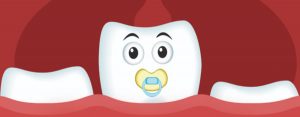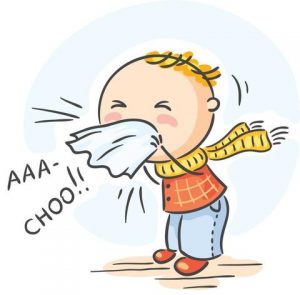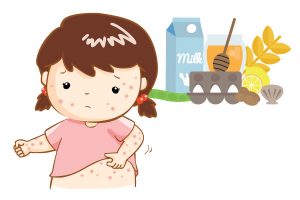Sarah Camp, September 2020
Fighting the Flare
What causes reflux flares, & what can you do about them?
One of the common denominators in this post when discussing reflux flares is histamine. Before continuing, it is important to understand the the significance of histamine and how it affects acid production. When histamine reaches parietal cells, it attaches to membrane proteins called H2 receptors. At that time, the histamine acts as a stimuli on gastric parietal cells, causing the parietal cells to secrete more acid.
For more information about the causes of reflux in general, visit this webpage.
What are the main causes of reflux flares?
Teething
Explanations:
- Saliva becomes more acidic when babies are teething. The purpose of this is to soften baby’s gums in order for the teeth to break through more easily. (Source)
- The number of mast cells present in dental follicles changes according to the phase of eruption of a tooth. When mast cells are activated, they release different types of granules, including histamines. (Source)
- Teething produces extra saliva. The excess liquid entering baby’s digestive tract can cause a greater chance of regurgitation and irritation. (Source)
- Saliva is pH 7 to 7.5 so alkaline, AND this will be swallowed down. Parietal cells in stomach go in mode against it and do produce extra acid to level that out, this is why there is more acid and also mucous in stomach and that makes them spit up visibly or even throw up. [Anke T.]
- Babies are much more likely to mouth/chew objects in close proximity to them when they are teething. This may lead to an unsafe food being ingested accidentally, or can even allow baby to contract a secondary illness.
- Teething has been reported by InfantReflux members to have caused their babies to do more “active” refluxing/spit up or vomit more. This is not uncommon.
*Exercise caution when utilizing homeopathic or natural teething remedies, such as Hyland’s teething tablets or Camilia teething drops. Sometimes these products contain inactive ingredients that sensitive babies may react to. Hylands in particular has a history of containing both lactose and belladonna. Brands such as Punkin Butt and Wellements may contain essential oils, which are NOT safe to ingest. EOs should not be used period with infants under 6 months, and should only be diffused not used topically on babies 6 months-2 years. For more information, please visit https://www.usingeossafely.com/. Another unsafe practice is using Orajel or any other true numbing agent.
While it won’t take away the reflux flares from teething, making your own “popsicles” at home is something “purer” that you can do to help alleviate Baby’s teething pain. You can freeze breast milk, formula, or water–or if baby has a safe puree or juice, you can dilute that with water for a treat. Chamomile is one of the main ingredients for most homeopathic remedies. Consider brewing your own Chamomile Tea at home and rubbing it on baby’s gums cold, or freezing and turning into a chewable treat! Click here to be taken to our product page for our favorite popsicle molds! Another option is if you have silicone or mesh teethers, you can crush ice or other frozen materials listed previously and put them inside.
Another non-medication option is an amber teething necklace. Becky L. likes the Momma Goose brand the best because they have a breakaway clasp!
Earthley makes a Teeth Tamer that does contain the herb clove, NOT the essential oil clove. (Remember EOs are not safe to use for teething on babies!) This would be a viable option for little ones who react to the ingredients in Benadryl.
*If you notice Baby having difficulty feeding while teething, that can be not only from reflux pain but also because it hurts to suck when a tooth is breaking through the gums. Some of the pain-relieving remedies may be tried prior to a feeding, and if baby is bottle-fed with no issues regarding choking/aspiration, increasing to the next level nipple flow temporarily may help.
Seasonal Allergies
Explanations:
- When something that you are allergic to enters your body, your immune system recognizes the allergen as a threat and produces antibodies to fight the threat as a response. These antibodies create and release histamines. (Source)
- Less common is a condition called Eosinophilic Esophagitis (read more about EoE). Triggers, including environmental/airborne, can cause a type of white blood cell, called eosinophils, to gather in the GI tract. This inappropriate collection of cells causes heartburn/reflux. (Source)
- Adults and children/infants with asthma are more susceptible to reflux flares from environmental allergies. During an asthma attack, breathing difficulties can cause the esophageal sphincter to open. This allows the contents of the stomach to be regurgitated more easily. Furthermore, certain asthma medications designed to open the airway also relax esophageal muscles, including the esophageal sphincter. (Source)
Food Fails
Explanations:
- As mentioned above, allergic reactions produce the release of histamines, which stimulate production of acid.
- Milk/Soy Protein Intolerance
- Information about Allergies & Intolerances
- FPIES
*The best thing you can do to control flares from food fails is to strictly avoid unsafe foods. However, this is not always possible especially with food trials for the introduction of solids. To find potentially safer food choice options, click here. Additionally, suggestions on introducing solids can be found here.
Illnesses or Infections
Explanations:
- When a person becomes sick, the immune system is activated to fight off the virus or bacteria invading the body. It begins creating antibodies which release histamines.
- The majority of the immune system resides in the gut, so when the immune system is activated, it affects the digestive system as well.
- Often when there is an illness, extra mucus is produced. When this mucus is swallowed, it can aggravate the GI tract.
*When dealing with illness, it is always important to make sure that the root cause of the illness is not uncontrolled reflux. The symptoms (runny nose, cough, ear infections, sore throat) can very much present in the same ways. Reflux can be responsible for many common ear/nose/throat ailments. (Read more)
As far as treating the illness itself, particularly respiratory, these are some suggestions our members have found helpful:
- Cool mist humidifier
- Steam up a bathroom with a hot shower and sit in the room with Baby for as long as you can do so comfortably. Never leave a baby alone in this situation!
- Use nasal spray or drops to help loosen up mucus too.
- Use suction such as the Nose Frida or a battery-operated nasal aspirator to clear out mucus. This will not only help baby breathe better but also help prevent secondary infections (ear/sinus).
- Vick’s makes a baby VaporRub that can be applied to the feet. Cover with socks because it is messy!
- Fresh air may help if baby is having mild breathing difficulty, cold air in particular. Standing in front of an open freezer can potentially help too, just not as effectively as outdoors.
- Feed and keep upright in general whenever possible.
- Baby will probably eat less which is expected, but make sure that enough fluids are being consumed to maintain hydration.
When in doubt about medications or concerns of your child’s illness, please always consult your pediatrician or other medical provider!
Vaccines/Immunizations
Explanations:
- Each vaccine contains an array of different ingredients. Some shots contain multiple different vaccines in one injection. There are numerous opportunities for these components to trigger allergic or intolerant reactions. (Source)
- Vaccines cause the immune system to produce a type of T-cell called T-lymphocytes. These produce histamine. (Source)
- Finally, some vaccinations also contain antibiotics. These may further affect the gut microbiome if it is already in distress, evidenced by digestive symptoms such as reflux. (Source)
*This site does not give opinions or encourage debate about vaccines, as it is a very personal choice for each parent, not to mention a highly controversial and polarizing topic in today’s parenting culture. Avoiding vaccines altogether is not the only way to negate reflux flares. There are multiple options available for you to research further and always discuss with your child’s pediatrician.
If you are unsure whether your baby is experiencing reflux or not, always take a look at symptoms. When a baby’s reflux was previously well-controlled with correct dietary adjustments and medications, and symptoms are returning (or have changed as a baby gets older), that is reasonable evidence to believe that the baby may be experiencing a reflux flare.
This post was written to help parents determine what symptoms may be attributed to: “How Do You KNOW It’s Reflux?”
So…what’s a parent to do?!
These are some potential solutions to help get your baby through a flare with as little discomfort as possible! As always, please discuss any and all changes, especially in regards to medication, with your child’s medical team.
PPI Dose Increase
Function: “Bumping,” or increasing, PPI dose by 20% for a period of two weeks can help get acid production back under control. More about PPI dosing can be found here.
Good for: Any/all flare reasons listed above
H-2 Blocker, a.k.a. H2RA (ex: Pepcid; Zantac before it was recalled)
Function: PPIs turn off the proton pumps in the stomach that produce acid. H-2 blockers, on the other hand, prevent histamine from being received by the parietal cells. This means that the parietal cells will not produce *extra* acid. (Read more)
Good for: Any reason for flares that increased PPI has not helped with
Special considerations: PPI and H2RA must be spaced correctly, otherwise they essentially cancel each other out. There needs to be a period of time of at least three hours between these two medications, but waiting four hours is better if possible. (Click here for more info)
Ideally, the H2 blocker would be given *after* the last dose of PPI, so that it could help cover the nocturnal acid dump better. (Explanation)
If you “run out” of time and are faced with a decision between giving all doses of PPI in a day, or the H-2, the PPI is the more important of the two.
Pepcid can be compounded at home. The recipe can be found here.
H-1 Blocker (ex: Benadryl, Zyrtec, Claritin, Allegra)
Function: H-1 blockers are your “classic” antihistamines. They help control the body’s production of histamine.
Beneficial for:
- Seasonal allergies
- Teething, *if* an H-2 blocker alone isn’t controlling reflux enough
Special considerations: Another great use for Benadryl (infant/children’s liquid) is to dip your finger in it and rub it on Baby’s gums. It has a numbing effect and is safe for babies, unlike other true numbing products such as Orajel.
H-1 Blockers do not interact with PPIs and should be able to be given at the same time; they should also be able to safely be given with H-2 Blockers. Please always discuss with a pharmacist or doctor to confirm.
Antacid (CVS Cherry Supreme)
Function: Temporarily neutralizes the pH of stomach contents. This page has information about brands and dosing.
Beneficial for: Small breakthrough reflux; needing relief for a short time until the next dose of medication
Special considerations: Must be spaced at least 2 hours apart from PPI each way.
Can cause loose stools if used too frequently.
May bother babies who are sensitive to ingredients (corn, soy, etc.)
Detox/Mineral Balancing
Function: The body has natural detox pathways and methods of “cleaning out” anything that it deems offensive. This includes anything in the body that triggers an allergic or intolerant response. There are, however, ways to help speed the process along and give the body support in escorting them out.
Beneficial for:
- Food fails
- Vaccines
Special considerations: For magnesium (epsom salt) baths, never start off with the full amount. Start off slowly & work your way up to the full recommended amount over a period of several baths. Don’t do a mag bath two days in a row; only do 2-3 per week. Always enter hydrated and hydrate after (both parent and baby). This website explains all about magnesium and epsom salt baths.
Check out this link and this one for more information about keeping infants’ and children’s bodies healthy through mineral balancing.
Other ideas for helping carry out any substances bothering baby more quickly would be Living Clay Bentonite Clay (found on our shopping favorites page) or activated charcoal.
Be sure to discuss anything that will be ingested with a medical provider, and how those detox supplements would need to be spaced from other medications.
Probiotics
Function: Probiotics alone are not a cure for reflux/its root causes. However, if you know that beneficial bacteria has been removed or is lacking from the gut, probiotics are a great way to restore that good gut flora and improve the health of the microbiome.
Suggestions can be found here.
Beneficial for:
- If antibiotics are prescribed for an illness (either taken directly by Baby or consumed indirectly via Mom’s breastmilk)
- If vaccines containing antibiotics were administered
- Potentially if Mom had to be on antibiotics during labor/delivery, or even during pregnancy
A Note About Pain Over the Counter Medications…
Sometimes a baby is so uncomfortable or has a high enough temperature that traditional children’s medications are warranted. This may be due to pain from teething, fever from a viral or bacterial illness, or after-effects of vaccinations. When considering medications, these are some things to keep in mind:
- Anytime there is a dye-free version available, always go with that. There are dye-free options for brand-name Motrin, Benadryl, and Tylenol–the three most common over the counter medications recommended for infants by pediatricians. There is a new brand of medication called Genexa which may be a good option to escape unwanted inactive ingredients with both acetaminophen (Tylenol) and diphenhydramine (Benadryl).
- If Baby is age 6 months or older, the preferred fever/pain medication is ibuprofen (Motrin). There are a few reasons for this:
- 1. It is an anti-inflammatory, which helps more with teething or general pain.
- 2. Tylenol is not as healthy overall for the body as Motrin, as it depletes glutathione.
- 3. Tylenol can contribute to Delayed Gastric Emptying and/or cause constipation. Both of these worsen reflux.
- HOWEVER, if baby is running a fever that is not well-controlled enough with doses of Motrin at appropriate increments, there can be serious consequences of a temperature that stays too high for long. At this point, it is important to discuss with your physician rotating Motrin and Tylenol to keep the fever under control.
- If Tylenol must be used, such as a high fever situation described above, baby under 6 months, hospitalized, etc. consider using this cream to help restore Baby’s glutathione.
- ALWAYS follow your child’s doctor’s dosing guidelines with these types of medications.
- It is usually better to give medications like Motrin or Tylenol with a feeding, so that they are easier on the stomach.
- Ibuprofen (Motrin) is acidic and should ideally be spaced 45 minutes at least from a PPI dose. 60-90 minutes apart from PPI is even better whenever possible.
For practical ideas to deal with the stress of reflux in general and soothe a distressed baby, check out two of our other posts:
Affiliate Links









